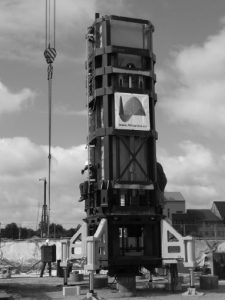Rapid Load Testing Prediction Models
Titel |
Rapid Load Testing Prediction Models |
 Rapid Load Testing Prediction Models |
Author(s) |
Middendorp, P.; Bielefeld, M.W. and Bakker, J. |
|
Year |
2018 |
|
Language |
English |
|
Where |
10th Int Stress Wave Conference, San Diego, USA |
|
Cite as |
Middendorp, P., Bielefeld, M. W., and Bakker, J., 'Rapid Load Testing Prediction Models,' Stress Wave Theory and Testing Methods for Deep Foundations: 10th International Conference, ASTM STP1611, P. Bullock, G. Verbeek, S. Paikowsky, and D. Tara, Eds., ASTM International, West Conshohocken, PA, 2019, pp. 286–307, http://dx.doi.org/10.1520/STP161120170237 |
ABSTRACT:
Rapid load testing (RLT) can be performed in a single loading step or in multiple increasing loading steps. These loading steps are defined in advance and should be adhered to during testing as closely as possible. Moreover, to satisfy the quasistatic condition for RLT, the load duration should be long enough. This paper focuses mainly on drop hammer systems in which the maximum load duration depends on the drop mass, cushioning spring properties, drop height, and soil resistance. Predicted peak load and load durations can be derived from a database with empirical values, calculated using a theoretical closed-form solution for a simple mass spring pile model, or calculated using the wave equation method. To increase the accuracy of the predictions, a learning loop approach is required for all of these approaches. Apart from predicting peak loads and load durations, the pile stresses, validity of the unloading point method, and applicable code requirements can be checked as well. This paper describes and discusses these methods.
DOWNLOAD:
You can download the entire article here after entering your name and e-mail address:




